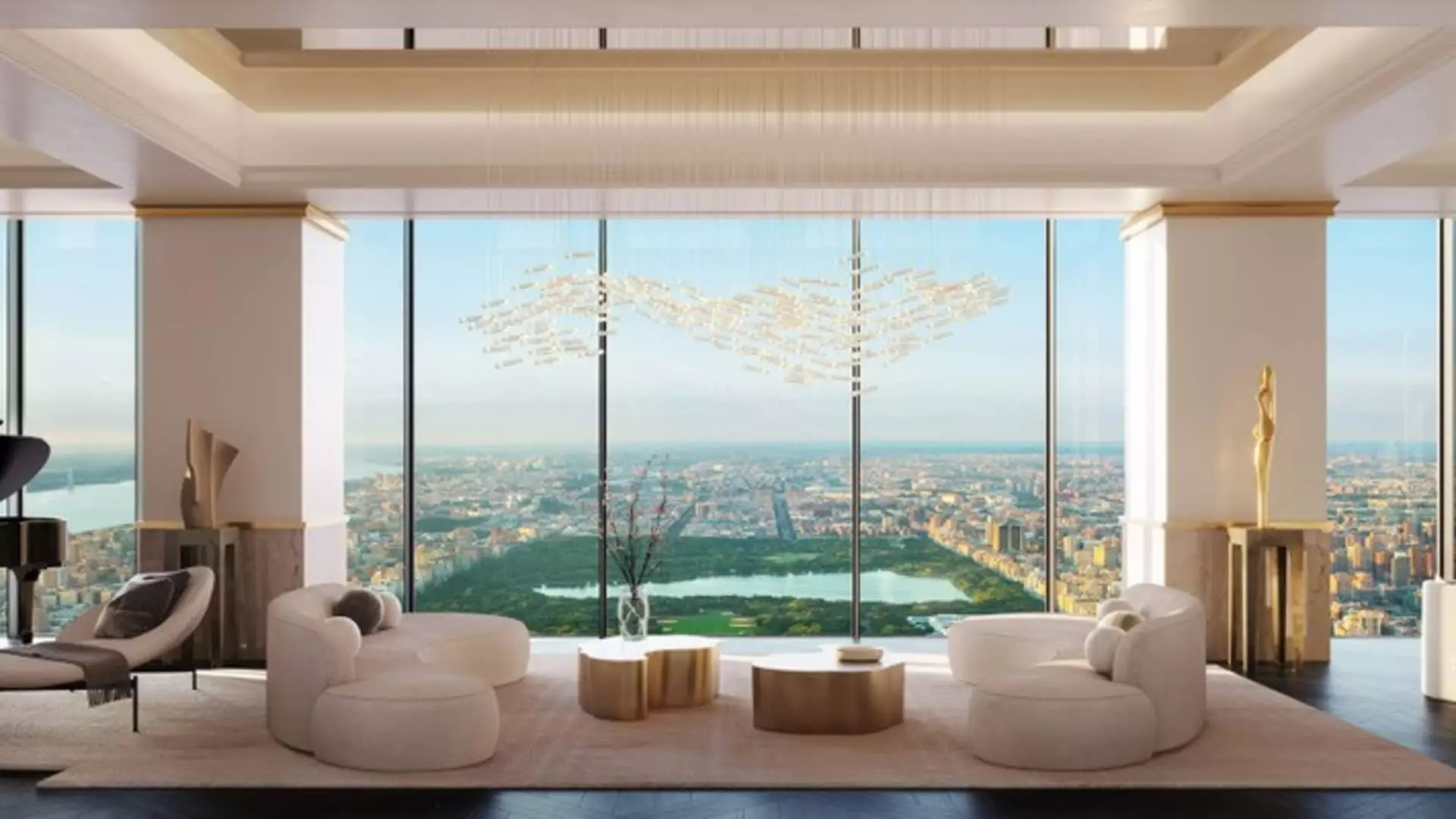As global markets convulse under the weight of tariff wars and economic uncertainty, Manhattan’s real estate landscape is concurrently erupting into an undeniably lucrative spectacle, underscored by the unveiling of a staggering $110 million penthouse. At first glance, the dichotomy between the world of high finance and luxury living seems paradoxical. The Dow Jones Industrial Average recently plunged to unprecedented lows—but amidst this chaos, ultra-premium real estate appears almost untouchable, attracting buyers who are seemingly insulated from the economic storm. It raises critical questions about the long-term implications of wealth in a fluctuating market and whether this segment can truly withstand the winds of change.
Despite market volatility prompting panic at various consumer levels, certain buyers remain resolute. As Sotheby’s International Realty broker Nikki Field noted, her targeted clientele is not reacting to the doomsday headlines. They are, instead, intent on crafting expansive portfolios, underlining an intriguing shift where luxury residential assets assume the role of a harbinger of stability for affluent investors. This mindset reinforces the idea that economic crises may paradoxically serve to fortify the desirability of exclusive properties—transforming uncertainty into opportunity.
Architectural Ambitions at Record Heights
The penthouse at 111 West 57th Street offers more than just luxury—it symbolizes an architectural vision that elevates urban living. Marketed as a quadplex, combining two penthouses, it boasts 11,480 square feet of meticulously designed space, featuring breathtaking views of Central Park and more. The uniqueness of this property is not merely in its size but in its potential; the combined offerings of Penthouse 80 and Penthouse 82 epitomize a forward-thinking real estate philosophy focused on the richness of experience rather than merely the transaction value.
Field’s assertion that the architectural potential of these homes presents enormous opportunity is particularly prescient. In a world where consumer preferences are increasingly shifting towards experiential living, this listing encapsulates an evolving definition of luxury. These homes can become living art installations, offering not just comfort but an ethos—one that influential customers desperately seek to embody.
The Conflict of Price and Value in Luxury Markets
The reality of today’s luxury market is reflective of greater societal anxieties, even as it thrives in its own right. Recent statistics reveal that sales of homes exceeding $100 million have become almost routine, a measure that both excites and perplexes real estate indicators. As Jonathan Miller of Miller Samuel aptly noted, while these nine-figure sales once seemed like publicity stunts, they’re now part of an emerging reality. However, this phenomenon does not reflect the broader market; it is an oasis of extravagance amidst a desert of buyer hesitation.
We must examine how this burgeoning luxury scene coexists with the broader economic turmoil. Douglas Elliman luxury broker Noble Black pointed out that wealthiest individuals are increasingly drawn to tangible assets as a hedge against an unstable stock market. Hence, the modern luxury buyer’s decision-making is increasingly influenced by feelings of insecurity, driving them to prioritize investments in properties that carry intrinsic value and can withstand economic fluctuations.
Negotiation Dynamics: An Evolving Landscape
This duality of desire for luxury and weariness of market dynamics manifests itself further in how transactions are being negotiated. Aaron Kirman notes a stark disparity between buyers and sellers: while buyers proceed with caution, sellers cling to inflated expectations forged during boom years. The lag in transaction timelines reflects a tug-of-war taking shape; buyers are increasingly shrewd and tactical, demanding transparency, flexibility, and better pricing.
As these high-stakes negotiations evolve, we’re witnessing a more nuanced luxury market. It is not simply about securing a lavish residence; it has become a chess match, with buyers and sellers both attempting to gain leverage amidst a shifting economic tide. In South Florida, Senada Adzem offers a poignant perspective: it’s not about decline but adaptation. The $20 million-plus buyers exhibit a willingness to acquire trophy properties—defined less by price and more by rarity and intrinsic value—underscoring how luxury is being redefined in this new economic climate.
Market Resilience: A Sign of Change or Complacency?
Amidst fervent activity at the ultra-high end, questions linger about sustainability. Is this surge merely a reflection of the ultra-wealthy flexing their financial muscle, or does it represent a genuine shift in how real estate will play out in the wake of economic volatility? As the pattern emerges, market resilience in luxury is punctuated by stories of hesitance for more modest properties—suggesting that the ladder of security for most still feels uncertain.
The luxury real estate arena is experiencing a remarkable transformation, showcasing that while economic conditions may deter typical investors, they propel the rich towards fewer but more meaningful investments. This tension creates a unique narrative for the future of luxury real estate, potentially enticing new heights of understanding about wealth, value, and the very essence of what it means to own a piece of the American dream.

